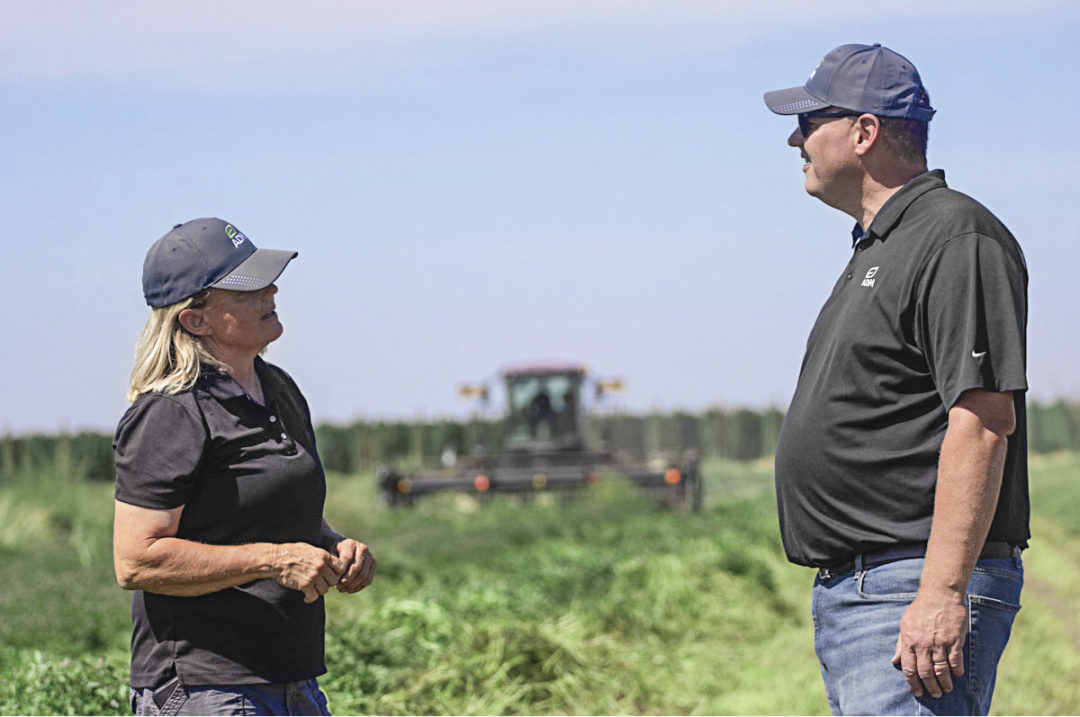Dairy producers are familiar with total mixed rations (TMRs) and TMR mixers. A TMR is an effective feeding strategy where mixed ingredients target a desired diet composition. We could use this process as an example of how farmers can analyze their business by considering a variety of ingredients, or contributions of both financial and production parameters, to generate a comprehensive output that shows farm-specific, tailored results that focus on efficiency and profitability within a dairy operation.
Putting value in the process
Implementing a process or tool that reviews both the financial (balance sheet, profit and loss statements, etc.) and production data from the fiscal year should occur on an annual basis at minimum and preferably biannually or more. This can show farmers a detailed analysis of variables occurring on the farm, including a new enterprise, buildings and expansions, and how these changes affect operations. For example, we use a profit analysis tool that has analyzed hundreds of farms through working in collaboration with specific feed mills.
Data analysis can provide practical focal points for progressing toward farm goals. It is impossible to target the opportunities if they are not first identified. Why chase pennies in one area while leaving thousands of dollars on the table in another area?
In a real scenario, a 20-cent-per-lactating-cow-per-day-feed increase was given an incredible amount of attention. This change represented a cost of 0.006% of the gross milk revenue, whereas areas offering opportunity of 5% margin (in this case $50,000 per year) were not considered. Comprehensive profit analysis could have helped this operation prioritize changes with the biggest impact.
Building a collaborative team
With any analysis, it is equally important to see where things stand today and create a plan of action for where to target growth. Success relies on a cross-functional team that is informed and engaged to work toward a common goal. When a livestock enterprise shows opportunity for improvements in efficiency, the nutritionist, veterinarian, suppliers and others providing services and support should be brought to the table to discuss herd management.
Improved herd management often contributes to financial profitability in the livestock enterprise. With the support and holistic perspectives of a specialized team, there is more opportunity to identify production factors of high influence, understand their financial impact and create plans to mitigate risk through positive herd management protocols. Developing a process to analyze profits can be a catalyst in forming this type of collaborative team.
Identifying areas of opportunity on the farm
There are many circumstances where profit analysis could prove useful to producers looking to further support their businesses. For instance, it is not unusual for a farm to have an equity opportunity to secure loans and borrow funds. Performing a comprehensive profit analysis evaluates the entire business by separating out the enterprises involved, as well as provides guidance on whether the farm can afford the loan from a cash flow perspective. It also may identify operational opportunities that, if captured, could provide the cash flow needed.
Another scenario may be that depreciation has caught up to the point where buildings or equipment must be replaced so the farm can continue to operate efficiently. However, there is no buffer from a cash flow perspective to cover the debt servicing that will accompany the replacement. Questions such as “How much better do my cows have to milk in order to pay for this?” are commonly asked. Although these questions can be answered through the profit analysis process, producers also need to consider quota holdings and other farm-specific variables.
There also may be a situation when a farmer is advised to curb spending or learns they have surplus earnings, but sometimes the reason is unclear. Farmers can avoid frustrations within their operations by gaining a clear understanding of what influences are affecting their cash flow. Some useful inquiries include:
- From what enterprise did the additional revenue come?
- Was it from additional milk revenue, the cropping enterprise, or perhaps from another revenue stream?
- Is this revenue repeatable?
- If purchases are made that increase debt servicing, can cash flow support repayment long-term?
- Will the item purchased provide an opportunity for increased revenue in the future?
Additionally, there are cases where elements of the business are thriving and other enterprises are leaching dollars – creating a net loss. Performing a profit analysis could offer perspective in these situations by identifying the strengths and weaknesses of each enterprise so that farmers can make long-lasting and effective changes to their operations.
Projecting the what-if
It is also crucial for farmers to think through and project the impact of change under different hypothetical scenarios related to their business. Examples could include changes in cull rates or improvements in cow comfort through an investment. It is important to consider how financial and production parameters can affect possible outcomes, providing logical data for the recommendation. Thorough analysis could also identify situations where the change may create stress from a cash flow perspective that cannot be justified until other business areas are addressed.
Many variables influence where profits are today, and there are many circumstances that impact the ability of the business to move the pendulum. It is rare for one change in management to immediately achieve the target, and it often takes the combination of many small changes and some time to begin realizing the goal. With a profit analysis process and the support and perspectives of a cross-functional team, it is easier to identify the influencers, understand their impact and create plans to mitigate risk while seizing opportunities.











